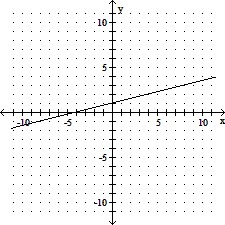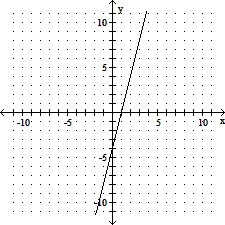Maximize and minimize  subject to
subject to
?

?
A. Max: 


min: 

B. Max:
 ,
,  ,
,  ,
,min: 

C. Max:
 ,
,  ,
,  ,
,min: 

D. the feasible region is empty
E. the objective function is unbounded
Answer: C
You might also like to view...
Use Taylor's formula to find the requested approximation of  near the origin.Cubic approximation to
near the origin.Cubic approximation to 
A. 10x + y - 50x2 - 10xy -  y2 +
y2 +  x3 +
x3 +  x2y +
x2y +  xy2 +
xy2 +  y3
y3
B. 1 + 10x + y - 50x2 - 10xy -  y2 +
y2 +  x3 +
x3 +  x2y +
x2y +  xy2 +
xy2 +  y3
y3
C. 1 + 10x + y - 50x2 - 10xy -  y2 +
y2 +  x3 + 100x2y + 10xy2 +
x3 + 100x2y + 10xy2 +  y3
y3
D. 10x + y - 50x2 - 10xy -  y2 +
y2 +  x3 + 100x2y + 10xy2 +
x3 + 100x2y + 10xy2 +  y3
y3
Perform the indicated operation and express the answer in decimal notation.
A. 0.002 B. -0.002 C. 2000 D. -2000
Find the x- and y-intercepts of the graph of the given equation, if they exist. Then graph the equation.5x - 20y = 20
A. x: -1; y: 4
B. x: -4; y: 1
C. x: 4; y: -1
D. x: 1; y: -4
Complete.70 km/h =  mph (Round to the nearest thousandth.)
mph (Round to the nearest thousandth.)
A. 112.630 B. 43.470 C. 50.470 D. 105.630


